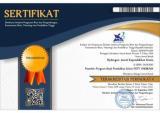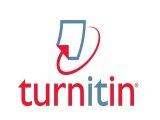Development of Student Worksheets based Process Oriented Guided Inquiry Learning to Remediate Student’s Misconceptions on Acid and Base
Abstract
This study aims to describe the feasibility of POGIL-based student worksheets to remediate misconceptions in terms of validity, practicality, and effectiveness, with the object of research of 11th grade students of Al-Islam Krian High School. Validity was measured from the content and construct validation sheets. The responses and activities of students measure practicality. Effectiveness is measured by the percentage of misconceptions that turn toward understanding the concept. The development of this Student Worksheet refers to the development of Research and Development (R&D). The model used is the 4D model, which consists of 4 stages, namely define, design, development, and dissemination. The research that has been carried out is limited to the development stage in the trial step. The validation result data is ordinal data that can be analyzed by determining the mode of each assessment aspect. The validity of worksheet is reviewed from the validity of content and construct which obtained a mode score of 4 with a valid category. The practicality results show that the worksheet is efficient with the activity for each trial of 95.56%, 95.56%; and 97.22%. The practicality of worksheet based on the POGIL learning model in terms of student response questionnaires using a Guttman scale through positive and negative statements with the answers "Yes" or "No" with the results of positive student responses of 95.78%.The effectiveness of the worksheet in terms of the results of shifting misconceptions towards understanding concepts was 81.06% in the theory of acids and bases, 70.09% in the strength of acids and bases, and 69.86% in acid and base indicators, with a significance value of 0.000 in the Wilcoxon test. The results showed that the POGIL-based worksheet developed was feasible to be able to remediate students' misconceptions on acid and base materials.
Keywords
Full Text:
PDFReferences
Anitasari, B., Winarti, A., & Rusmansyah, R. (2019). Media Simulasi Phet (Physics Education Technology) untuk Mereduksi Miskonsepsi Siswa pada Konsep Asam Basa. Quantum: Jurnal Inovasi Pendidikan Sains, 10(1), 8. Https://Doi.Org/10.20527/Quantum.V10i1.5713
Ardhana, I. A. (2020). Dampak Process-Oriented Guided-Inquiry Learning (POGIL) terhadap Pengetahuan Metakognitif Siswa pada Topik Asam-Basa. Hydrogen: Jurnal Kependidikan Kimia, 8(1), 1. https://doi.org/10.33394/hjkk.v8i1.2545
Arkadiantika, I., Ramansyah, W., Effindi, M. A., & Dellia, P. (2020). Pengembangan Media Pembelajaran Virtual Reality Pada Materi Pengenalan Termination Dan Splicing Fiber Optic. Jurnal Dimensi Pendidikan Dan Pembelajaran, 8(1), 29. https://doi.org/10.24269/dpp.v0i0.2298
Arslan. (2012). A Three Tier Diagnostic Test To Asses Pre-Service Teachers' Misconceptions About Global Warming, Greenhouse Effect, Ozone Layer Depletion, And Acid Rain. International Journal Of Science Education, 24(11), 1667-1686.
Asnawi, R., Effendy, & Yahmin. (2017). Kemampuan Berpikir Ilmiah Siswa Dan Miskonsepsi Pada Materi Elektrokimia. Jurnal Ilmu Pendidikan, 23(1), 25–33.
Arpiana, D., & Nurhadi, M. (2020). Efektivitas Penggunaan Model Pembelajaran POGIL Untuk Menurunkan Miskonsepsi Peserta Didik Kelas XI MIPA 5 Di SMA Negeri 4 Samarinda pada Pokok Bahasan Hidrolisis Garam. Jurnal ZARA, 8(1), 38-43.
Budiastuti, Dyah., & Bandur, Agustinus. (2018). Validitas dan Reliabilitas Penelitian. Jakarta: Mitra Wacana Media
Ekawisudawati, E., Wijaya, M., & Danial, M. (2021). Analisis Miskonsepsi Peserta Didik pada Materi Asam Basa Menggunakan Instrumen Three-Tier Diagnostic Test. Chemistry Education Review (CER), 5(1), 62. https://doi.org/10.26858/cer.v5i1.26359
Erna, M.-, Haryati, S., & Oktaviani S, A. (2021). Process Oriented Guided Inquiry Learning dalam Mereduksi Miskonsepsi Siswa SMA pada Materi Kesetimbangan Kelarutan. Al-Khwarizmi : Jurnal Pendidikan Matematika Dan Ilmu Pengetahuan Alam, 9(1), 1–12. https://doi.org/10.24256/jpmipa.v9i1.792
Fitriana, Nurayu. (2023). Peningkatan Keaktifan Peserta Didik melalui Media Persentasi Classpoint dan Game Edukasi (Quizizz & Kahoot) pada Pembelajaran Kimia. Jurnal Inovasi Penelitian Tindakan Kelas dan Sekolah. 3(1): 35-41.
Hardani., Andriani, H., Ustiawaty, J., Utami, Evi F.,... Auliya, Nur H. (2020). Metode Penelitian Kualitatif & Kuantitatif. Yogyakarta: CV. Pustaka Ilmu Grup
Haryono, Heny Ekawati. 2019. Kimia Dasar. Yogyakarta: Penerbit Deepublish
Izza, R. I., Nurhamidah, N., & Elvinawati, E. (2021). Analisis Miskonsepsi Siswa Menggunakan Tes Diagnostik Esai Berbantuan Cri (Certainty of Response Index) Pada Pokok Bahasan Asam Basa. Alotrop, 5(1), 55–63. https://doi.org/10.33369/atp.v5i1.16487
Khomaria, Istimatus Nur., & Nasrudin, Harun. (2016). Miskonsepsi Pada Materi Kesetimbangan Kimia Kelas XI MIA di SMA Negeri 1 Pacet. Unesa Journal Of Chemical Education, 5(1), 98–106.
Lintong, K., Bialangi, N., & Pikoli, M. (2018). Pengaruh Penerapan Strategi Pogil Terhadap Reduksi Miskonsepsi Siswa Pada Konsep Redoks di SMA Negeri 1 Tapa. Jurnal Entropi, 13(2), 215–220.
Lutfi, Achmad. (2021). Research and Development (R&D) Implikasi dalam Pendidikan Kimia
Miftachul ulum. (2016). Buku Uji Validitas dan Uji Reliabilitas. Malang. Page: 67
Milala, H. F., Endryansyah, Joko, & Agung, A. I. (2022). Keefektifan Dan Kepraktisan Media Pembelajaran Menggunakan Adobe Flash Player. Pendidikan Teknik Elektro, 11(1), 195–202.
Mubarokah, F. D., Mulyani, S., & Indriyanti, N. Y. (2018). Identifying students’ misconceptions of acid-base concepts using a three-tier diagnostic test: A case of Indonesia and Thailand. Journal of Turkish Science Education, 15(Special Issue), 51–58. https://doi.org/10.12973/tused.10256a
Nasrudin, H., & Azizah, U. (2018). Shifting Patterns of Pre-Service Teachersr Conceptions on Material of Colligative Properties of Solutions. 171(Snk), 151–154. https://doi.org/10.2991/snk-18.2018.36
Nasrudin, H., & Azizah, U. (2020). Overcoming misconception in energetic topics through implementation of metacognitive skills-based instructional materials: A case study in student of chemistry department, universitas Negeri Surabaya. Jurnal Pendidikan IPA Indonesia, 9(1), 125–134. https://doi.org/10.15294/jpii.v9i1. 21630
Nisa, N. A., & Fitriza, Z. (2021). Identifikasi Mikonsepsi Siswa Menengah Atas (SMA) Pada Pembelajaran Kimia Materi Redoks dan Elektrokimia : Studi Literatur. Edukatif : Jurnal Ilmu Pendidikan, 3(4), 1191–1198. https://edukatif.org/index.php/edukatif/article/view/516
Puteri, Rizke P. I., Mulyani, Sri., Khoerunnisa, Fitri., Wiji., & Widhiyanti, Tuszie. (2021). Strategi Pembelajaran Intertekstual dengan POGIL yang Berpotensi Meningkatkan Penguasaan Konsep Pengaruh Konsentrasi dan Suhu terhadap Laju Reaksi serta KPS Siswa. Jurnal Riset dan Praktik Pendidikan Kimia. 9(1): 94-105.
Putri, V. W., & Gazali, F. (2021). Studi Literatur Model Pembelajaran POGIL untuk Meningkatkan Hasil Belajar Peserta Didik pada Pembelajaran Kimia. Journal of Multidisciplinary Research and Development, 3(2), 1–6.
Rahayu, Alvi Dwi P., & Nasrudin, Harun. (2014). Implementation of Constructivist Strategy To Reduce Student’s Misconception of Sub-Microscopic Level on Chemical Equilibrium of XI Grade in SMA Hang Tuah 2 Sidoarjo. Unesa Journal of Chemical Education, 3(02), 88–98.
Rares, Hardin F., Caroles, Joice D. S., & Soru, Elvian A. (2020). Pemetaan Tingkat Penguasaan Konsep Elektrokimia Mahapeserta Didik Kimia Semester II Dengan Three-Tier Diagnostic Test. Oxygenius Journal Of Chemistry Education, 1(2), 1 – 9
Riduwan. (2015). Dasar - Dasar Statistika. Bandung: CV. ALFABETA
Rizqiyah, I. S., Sutoyo, S., & Yuanita, L. (2020). Conception Profile of Students in Class XI.1 Science on Chemical Equilibrium Materials with Pogil Learning Model to Reduce Misconception. International Journal of Innovative Science and Research Technology, 5(9), 681–687. https://doi.org/10.38124/ijisrt20sep294
Safitri, L., Winarti, A., & Suharto, B. (2020). Analisis Pemahaman Konsep Makroskopik-Submikroskopik-Simbolik Menggunakan Pendekatan Submikroskopik Pada Materi Larutan Asam Basa. JCAE (Journal of Chemistry And Education), 4(1), 16–23. https://doi.org/10.20527/jcae.v4i1.527
Sari, M. W., & Nasrudin, H. (2015). Penerapan Model Pembelajaran Conceptual Change Untuk Mereduksi Miskonsepsi Siswa Pada Materi Ikatan Kimia Kelas X SMA Negeri 4 Sidoarjo. UNESA Journal of Chemical Education, 4(2), 315–324.
Straumanis, A. (2010). Classroom Implementation of Process Oriented Guided Inquiry Learning. Metropolitan Universities, 17(4), 2.
Sunyono. (2015). Model Pembelajaran Multipel Representasi. Yogyakarta: Media Akademi.
Suparno, Paul. (2013). Miskonsepsi & Perubahan Konsep dalam Pendidikan Fisika. Gramedia Widiasarana.
Syafaati, D. A., & Nasrudin, H. (2018). Implementasi Model Pembelajaran POGIL Untuk Melatihkan Keterampilan Berpikir Kritis Peserta Didik Pada Materi Asam dan basa Kelas XI SMAN 18 Surabaya. UNESA Journal Of Chemistry Education, 7(3), 250 - 256.
Titari, I., & Nasrudin, H. (2017). Keterlaksanaan Strategi Konflik Kognitif untuk Mereduksi Miskonsepsi Siswa Kelas XI SMA Negeri 1 Kertosono pada Materi Laju Reaksi. UNESA Journal of Chemical Education, 6(2), 144–149.
Wahyuningtyas, Wulan., Sumarti, Sri S., Susilaningsih, Endang., & Wijayanti, Nanik. (2020). Analisis Miskonsepsi Asam Basa Menggunakan Instrumen Multirepresentasi Diagnostic Test Berbasis Web.
Wicaksono, Trio A. (2016). Tinjauan Pemahaman Konsep Larutan Asam Dan Basa Pada Tingkat Makroskopik Dan Tingkat Mikroskopik Siswa Kelas Xi Ipa Sma Negeri 1 Batu. Juli-Desember, 5(2), 1–6.
Wulandari, B., & Surjono, H. D. (2013). Pengaruh Problem Based Learning Terhadap Hasil Belajar Ditinjau Dari Motivasi Belajar PLC di SMK. Jurnal Pendidikan Vokasi, 3(2): 1-10
Zukhruf, Kana D., Khaldun, Ibnu., &Ilyas, Suhrawardi. (2018). Remediasi Miskonsepsi Dengan Menggunakan Media Pembelajaran Interakif Pada Materi Fluida Statis. Jurnal Pendidikan Sains Indonesia, 04(02), 56-68
DOI: https://doi.org/10.33394/hjkk.v11i4.8396
Refbacks
- There are currently no refbacks.

This work is licensed under a Creative Commons Attribution-ShareAlike 4.0 International License.





